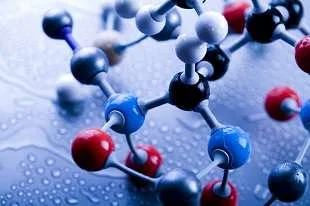Introductory Online Biochemistry Course
Biochemistry is an integral part of all human and animals health studies. This online biochemistry course will lead you through the fundamentals of chemistry including atomic structure, the periodic table, molecules, nomenclature, organic chemistry and more before investigating common organic compounds such as carbohydrates, lipids and more.
Lessons cover: introduction to biochemistry, lipids, proteins, enzymes, nucleic acids, thermo-regulation, carbohydrate metabolism, absorption, acidity, alkalinity, chemical analysis, and industry applications.
Prior Knowledge
Some secondary school chemistry will be helpful though it is not essential.
What you will do:
- Identify characteristics of common chemical compounds important in animal and human biochemistry.
- Explain the characteristics of major biochemical groups, including carbohydrates, lipids, and proteins.
- Explain the characteristics of chemicals which control biological processes in animals and humans, including enzymes and hormones.
- Explain the role of nucleic acids in the biology of animals and humans.
- Explain the role of thermo-regulation in animals and humans.
- Explain the role of carbohydrate metabolism in animals and humans.
- Identify the characteristics of acidity and alkalinity in relation to animals and humans.
- Develop simple chemical analysis skills relevant to testing animals. Identify applications and uses for biochemical processes and products.
There are 10 lessons in this course:
- Introduction To Biochemistry
- The basics; atoms, chemical bonds, molecules
- The Periodic Table
- Parts of a Molecule
- Common chemical groups
- Using these groups
- Arrangement of atoms in a molecule
- Chemical Nomenclature
- Hydrocarbons
- Aromaticity
- Organisms and Organic Compounds
- Biochemical Processes in the cell
- Lipids and Proteins
- Carbohydrates; types
- Hydrolysis
- Carbohydrate Function
- Lipids
- Fatty Acids
- Triglycerides
- Phospholipids
- Terminology
- Commercially useful fats and lipids
- Proteins
- Functional Categorisation of Proteins
- Proteins in the human diet
- Enzymes and Hormones
- Classification of hormones
- Endocrine Glands
- Enzyme activation
- Enzyme deactivation
- Digestion
- Digestive Enzymes
- Digestive Hormones
- Enzyme PBL Project
- Nucleic Acids
- Scope
- Nucleotide Structure
- RNA
- DNA
- ATP
- ADP
- Thermo-regulation
- Raising temperature
- Lowering Temperature
- Effect of Temperature on Enzymes
- Sweat Glands
- Energy Production
- Individual BMR
- Fever
- Carbohydrate Metabolism
- Glycogenesis
- Glycogenolysis
- Gluconeogenesis
- Hyperglycaemia
- Hypoglycaemia
- Carbohydrate Oxidation
- Glycolysis Citric Acid Cycle
- Anaerobic Respiration
- Carbohydrate Storage
- Absorption of Carbohydrates
- Carbohydrates in Mammals
- Comparing Energy Pathways
- The Urea Cycle
- Absorption
- Digestion
- Digestive Enzymes
- Chemical Digestion
- Absorption
- Peristalsis
- Gastric, Pancreatic and Intestinal Juices
- Acidity and Alkalinity
- pH
- Measuring pH
- Buffers
- Animal Acid Base Balance
- Acidosis and Alkalosis
- Mammalian Buffer Systems
- Role of Renal System in Acid Base Balance
- Chemical Analysis
- Biochemical Testing
- Concentration testing
- Moles and Molarity
- Chromatography
- Spectrophotometry
- Analysis of Biomolecules
- DNA Composition
- RNA Composition
- Protein Composition
- Titration
- Biochemical Applications
- Environmental and Agricultural Testing
- Medical Science
- Poisons/Toxins
- Cell Structure

